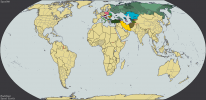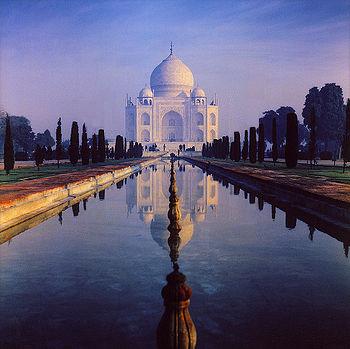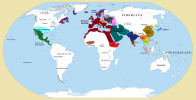Yeah, that.

He
did mention Portugal and slaves, but if all submerged continents he listed were above sea level, it'd be likely that the Americas would be (re-)discovered earlier on, and since there's legends about Mali heading over there...

Here's how I'd make some of the places he mentioned turn out, in order of appearance:
Zealandia: settled by Melanesians first, and Polynesians later on; due to how well the Maori did against the British in OTL, I think Zealandia might actually end up becoming a native majority country, while still being under the Commonwealth, not unlike some of the smaller Pacific states.
Kerguelen Plateau: some failed Austronesian attempts at colonization, until the French come knocking. It ends up as some kind of reverse Canada, being a sparsely populated country with a French-speaking majority and an English-speaking region, with a Breton-speaking community in place of Canada's small Gaelic-speaking one.
Walvis Ridge: inhabited by a people not unlike the Khoisan ones very,
very early on. They avoid being genocided by one Bantu nation or another due to being on an island, until the Europeans come and wipe out most of them through diseases (at first) and deliberate genocide (later on); basically, the Australia of Africa.
Rockall: I had a stab at it a while ago, it probably ends up being some combination of Celtic and Germanic, most likely Norse-Gael, with genetics not unlike those of the Faroe Islands, but with a culture that takes more after the Brythonic or Goidelic side of the ethnic cocktail.



